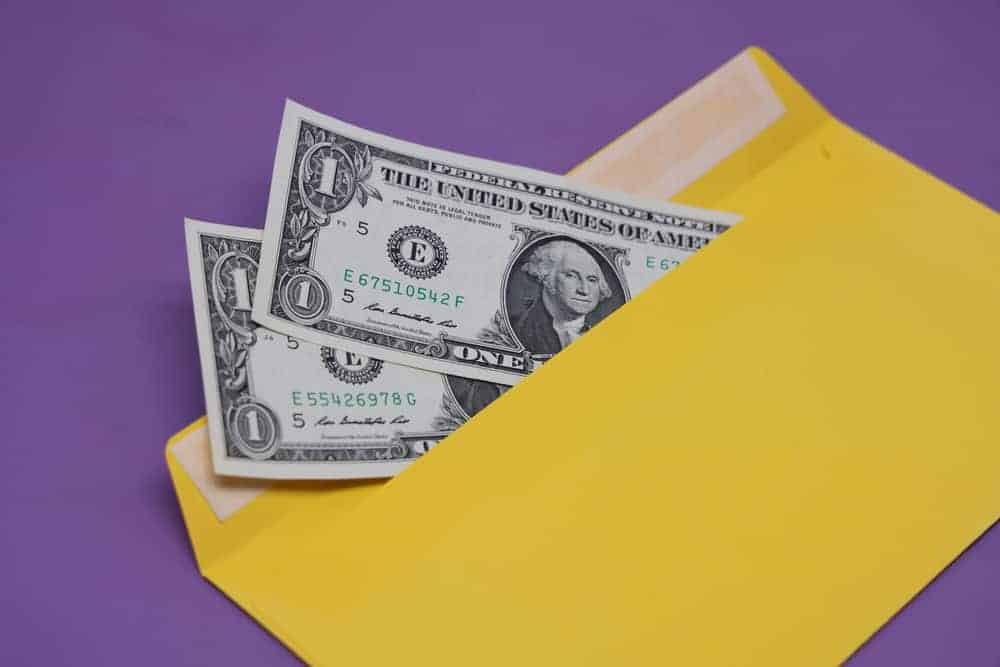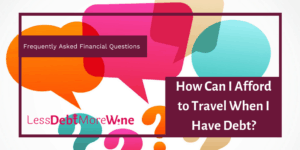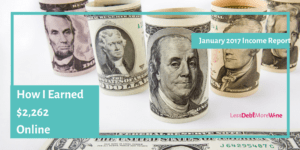How to Budget with Cash
THIS POST MAY CONTAIN AFFILIATE LINKS. MEANING I RECEIVE COMMISSIONS FOR PURCHASES MADE THROUGH THOSE LINKS, AT NO COST TO YOU. PLEASE READ MY DISCLOSURE FOR MORE INFO.
If you’re looking to get your finances in order, a cash-only budget may be the way to go. This system can be simple and effective if done correctly.
In this blog post, we will discuss some tips and tricks for budgeting with cash.
We’ll also cover the cash envelope system, which is a popular way to manage cash spending. By following these tips, you can easily stick to a cash-only budget and start getting your finances under control!
Why Budget with Cash
There are many benefits to using cash for your expenses. One of the main ones is that it can be easier than using credit cards or debit cards because there’s no need to keep a running tally in your head as you spend money each day!
You’ll also save time since you won’t have to worry about transferring money between accounts or writing checks.
Another big benefit of cash is that it can help you stick to a budget more easily. When you’re working with cash, you have to physically hand over the cash to pay for something. This makes it very difficult to spend more than you intended – something that’s all too easy to do. Allowing you to have a handle on your actual cash flow.
When spending only with cash, you can focus on debt repayment, because you won’t be adding to that debt by using credit cards.
How Cash Budgets are Easier to Stick To
When you’re on a cash budget, every dollar has a purpose, helping you to have a balanced budget. You can’t just pull out your debit card and spend whatever you want without thinking about it. This makes it much easier to stick to your budget since you’re not tempted to overspend.
You’ll also have a better idea of where your money is going. Studies have shown that cash users were 82% better at recalling aspects related to an item’s cost than credit card users.
With a cash budget, you can see exactly how much money is left in each category at any given time. This can help you make decisions about where to allocate your funds in the future.
Cash Budget Struggles
Of course, cash budgets aren’t perfect. One of the biggest struggles is that it can be difficult to come up with enough cash to cover all of your expenses each month. This may mean you need to start tracking your spending more closely so you have a better idea of how much money you need each month.
Another issue with cash budgets is that cash is harder to keep track of than other forms of payment. It’s easy for cash to get lost or stolen, which can make budgeting more difficult if you’re not careful about how you store it (and where).
5 Steps to Create Your First Cash Budget
The cash envelope method is great because it helps keep you organized and prevents you from making impulse purchases. Follow the steps below to successfully create your first cash-only budget!
Step One: Determine how much cash you will need each month.
This is best done by looking at your spending habits over the last few months to see where most of your money goes.
Determine how much cash you want in each of your spending categories and then take your budget totals and divide that amount by four (or whatever fraction works best for you). This will give you a weekly cash budget, which should be easy enough to manage.
Then you’ll need to figure out how many cash envelopes will be needed in each category.
Finally, determine where you’re going to store your cash; this could be a safe at home or even just an envelope tucked away somewhere safe from prying eyes.
Step Two: Create a cash envelope for each expense category that is separate from your other envelopes.
You can use regular envelopes, purchase some already made ones off the internet (we love these ones from Clever Fox), or buy some templates.
Label each envelope with the category name (and the amount of cash inside) so you know exactly what it is for.
If at any time your cash budget runs low, you can always adjust the amounts in your envelopes to reflect that. Just make sure you keep track of how much money is in each one!
Step Three: Divide your income to fill the cash envelopes with enough money to cover all of your expenses in that category for one month (or however long it takes until payday again).
You should do this at least once per month (depending on how often you get paid and when those paydays occur).
If your cash envelope has more cash than needed, roll over the excess into another cash budget category or use it to buy something nice for yourself.
If there’s not enough cash in an envelope right away, you can always borrow from another envelope, but make sure to adjust the cash amounts in that category as soon as possible.
Step Four: Spend cash only from the appropriate envelopes when making purchases related to that category.
This is where the cash budgeting system becomes really easy – just take your cash out of the envelope and hand it over to the cashier. No more tracking expenses on a spreadsheet or having to deal with the cost of a budgeting software!
When your cash runs out, that’s it for the month – you’ll need to wait until your next paycheck to purchase anything else in that category.
If you’re ever not sure which envelope to use, just look at the label and decide based on what the purchase is for.
Step Five: Keep track of cash purchases (aka your cash balance) by writing them down on a piece of paper (or the back of your envelope).
This will help make sure you’re not spending more than what’s needed each month and keep everything organized! If there isn’t enough cash left over at the end of the month to fund your expenses, then it’s time to make adjustments to the budget.
Remember:
- The cash-only budget is a great way to keep track of your spending and make sure you’re not going over your budget each month.
- Another benefit of using cash is that it helps you stick to your budget since you can physically see how much money you have left.

How to Make Your Own Cash Envelopes for Budgeting
Making your own cash envelopes is a great way to customize the system to fit your needs. Here’s how to do it:
- Decide how many envelopes you will need, you figure this out by deciding the categories of your budget some common ones include:
- groceries,
- entertainment,
- transportation, and
- housing/utilities. (though we have a great list here)
- What kind of envelopes will you use or will you use a combination of many? There are standard letter envelopes that can work well for long-term savings goals, but probably won’t fit in your wallet or purse well.
There are premade wallets and envelopes like the ones below.
- TEAR RESISTANT, WATERPROOF & DURABLE: Clever Fox cash envelopes are made of a unique material composed of high-density polyethylene fibers often used to protect buildings during construction. These envelopes will easily withstand everyday use and water.
- 12 ASSORTED COLORS & PERFECT SIZE, MAKES A GREAT GIFT: There is a unique color for each of the 12 different budgeting categories. The money envelopes for cash are 6.7 inches x 3.3 inches making it the perfect size to fit in your bag or wallet.
- GUARANTEED TO KEEP YOUR MONEY ORGANIZED OR YOUR MONEY BACK: The Clever Fox Budget Envelopes for Cash System is guaranteed to work, or we will give you your money back! If you are not happy with your results, or for any reason you’re not completely satisfied with your purchase of these money saving envelopes, simply contact us for a hassle-free refund. No questions asked!
Or you can buy a template and make your own.
Tips to Successfully Budget with Cash
Cash can be a great way to budget, but it’s not for everyone. Some people are cash-only only because they have no other option and don’t know how to use a debit card or credit card wisely.
Cash is usually considered the best method of payment if you’re trying to get out of debt, especially credit card debt.
If you’re cash-only because you want to improve your budgeting skills, cash is an excellent method that can help. Here are some tips to help you succeed with cash-only budgeting:
- Pay attention to what you’re spending. When you use cash, it’s much harder to “hide” your purchases from yourself. You can see the cash leaving your wallet and this will help you be more aware of how much money you’re spending in each category.
- Create a budget and stick to it. This is probably the most important thing you can do when trying cash-only budgeting. Make sure you have a plan for how much money you’ll spend in each category each month and then stick to it.
- Start small. If cash-only budgeting is new to you, start with a small amount of cash that you’re comfortable with. You can work your way up to cash-only budgeting over time.
- Try cash envelopes. If you want a little extra help keeping your cash organized, try cash envelopes or cash jars for each category of spending in your budget.
It’s not as hard as it sounds! You can start out by using cash for groceries and then add in other categories as you get more comfortable.
With a little practice, cash-only budgeting can be a great way to manage your money and stay on track with your spending goals.
Bottom Line
Cash is a great option if you’re struggling to keep your spending in check. It’s much harder to overspend when cash is the only method of payment available and you can’t go into debt with cash!
Of course, cash isn’t for everyone. If you have trouble keeping up with cash or just prefer using credit cards, cash-only budgeting isn’t for you.
However, cash can be a great option if you’re looking to get out of debt or just want to improve your spending habits and cash-only budgeting is worth trying out at least once in your life!
Other Frequently Asked Questions
What If I Pay Some of My Expenses Online? How does a cash budget work then?
It’s not too difficult to stick to cash budgeting, even with online expenses. You can buy gift cards with cash so that you can make purchases online without using credit or debit cards. There are also some prepaid cash cards that will allow you to make purchases online without using a credit card or debit card (although they usually charge a fee).
Alternatively, you could pay online for things like utilities, insurance, etc. But you’d pay cash for everything else.
For example, you might use online banking to pay your bills, but you’d still have to write down all those expenses on paper.
You’d only use cash for things like groceries, gas, and entertainment.
What If I Have an Unexpected Expense?
Unexpected expenses are bound to happen, even if you’re using a cash budget. When this happens, it’s important to have a plan for how you’ll deal with the extra expense. One option is to dip into your savings or use a credit card (if you have one available).



